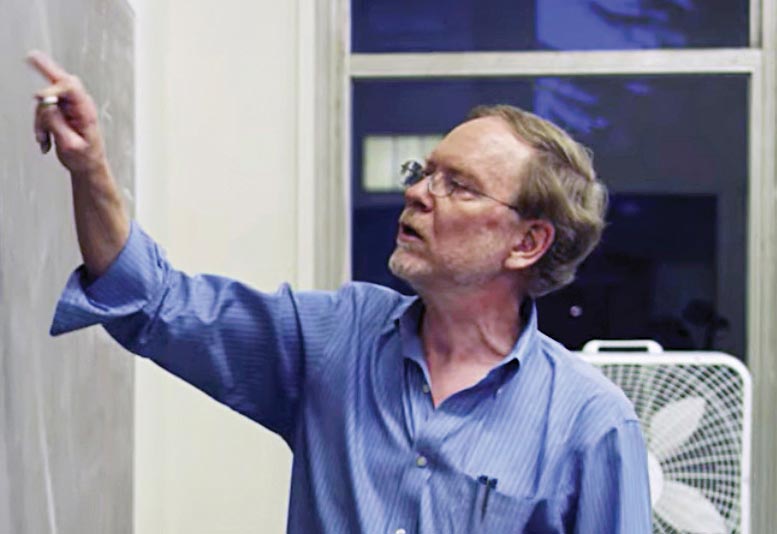Robert Littlejohn received his B.A. in 1975 and his Ph.D. in 1980, both from the University of California at Berkeley. After postdoctoral positions at the La Jolla Institute and the University of California, Los Angeles, he joined the Berkeley faculty in 1983. He has been a Presidential Young Investigator and a Miller Professor, and he is a fellow of the American Physical Society.
Research Interests
I have broad interests in atomic, molecular, nuclear, optical, and plasma physics, and in nonlinear dynamics. I am especially interested in mathematical aspects of basic problems in applied physics. Projects in the last ten years have included studies of periodic orbits in the semiclassical quantization of chaotic systems; topological aspects of semiclassical quantization; a normal form theory for Landau-Zener transitions, also known as mode conversion; entropy and phase space representations of optical fields; studies of diffraction in nonimaging optics; gauge fields in the separation of rotations and internal motions in few-body systems; and wavelets and wavelet-like bases for scattering theory in few-body systems. Several of these projects have led to dissertations for my students; the last two mentioned are current. The unifying themes of this work are Hamiltonian dynamics, short-wavelength asymptotics, the classical-quantum correspondence, geometrical and topological methods, and symmetry.
Current Projects
For several years I have been pursuing geometrical methods in few-body physics. A fundamental problem in this area is the separation of rotations from internal motions in few-body systems, that is, how to write down and understand the few-body Hamiltonians which result when all the degrees of freedom which can be eliminated analytically due to translational and rotational invariance have been eliminated. This is a problem with a long literature in atomic, molecular and nuclear physics, but this literature is almost entirely coordinate-based and non-geometrical. Our project has been to introduce geometrical methods into this area and to explore the consequences. Our accomplishments have included an examination of the gauge fields which enter into the reduction process; a study of the monopoles which are the sources of these gauge fields, and the singularities (strings) of their vector potentials; studies of the topology and structure of the internal spaces associated with few-body systems; gauge-invariant perturbation methods; and the geometry of constrained quantum systems. The references listed below give a good idea of the nature of this work. More recently, we have been working on generalizations of wavelets and wavelet-like bases for quantum calculations on the internal spaces of few-body systems. We have been especially interested in improvements to current practice in scattering theory.
Publications
R. G. Littlejohn and M. Reinsch, “Gauge fields in the separation of rotations and internal motions in the n-body problem,” Rev. Mod. Phys. 69, 213 (1997).
R. G. Littlejohn, K. A. Mitchell, M. Reinsch, V. Aquilanti, and S. Cavalli, “Internal spaces, kinematic rotations and body frames for four-atom systems,” Phys. Rev. A58, 3718 (1998).
K. A. Mitchell and R. G. Littlejohn, “The rovibrational kinetic energy for complexes of rigid molecules,’’ Mol. Phys. 96, 1305 (1999).
K. A. Mitchell and R. G. Littlejohn, “Kinematic orbits and the structure of the internal space for systems of five or more bodies,” J. Phys. A33, 1395 (2000).
R. G. Littlejohn and K. A. Mitchell, “Gauge theory of small vibrations in polyatomic molecules,’’ in Geometry, Dynamics, and Mechanics, P. Newton, P. Holmes, A. Weinstein (Eds.) (Springer-Verlag, to appear 2002).
R. G. Littlejohn, M. Cargo, and Kevin Mitchell, “Investigations of multidimensional discrete variable representation basis sets,” submitted to Journal (2001).

